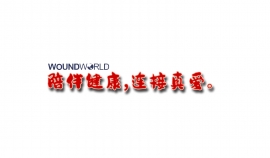文献精选
Peng Shu1,3,4,* , Jiaxin Mo2,*, Zunjiang Li2 , Mingjie Li3 , Wei Zhu2,5, Zhiyun Du1,4
1 State Key Laboratory Basis of Xinjiang Indigenous Medicinal Plants Resource Utilization, CAS Key Laboratory of Chemistry of Plant Resources in Arid Regions, Xinjiang Technical Institute of Physics and Chemistry, Chinese Academy of Sciences, Urumqi 830011, Xinjiang, P.R. China
2 The Second Clinical College, Guangzhou University of Chinese Medicine, Guangzhou 510006, Guangdong, P.R. China
3 HBN Research Institute and Biological Laboratory, Shenzhen Hujia Technology Co., Ltd., Shenzhen 518000, Guangdong, P.R. China
4 University of Chinese Academy of Sciences, Beijing 100049, P.R. China
5 Guangdong Provincial Key Laboratory of Clinical Research on Traditional Chinese Medicine Syndrome, Guangzhou 510006, Guangdong, P.R. China *Co-first author
Correspondence to: Wei Zhu, Zhiyun Du; email: 该Email地址已收到反垃圾邮件插件保护。要显示它您需要在浏览器中启用JavaScript。, https://orcid.org/0000-0003-1165-634X; 该Email地址已收到反垃圾邮件插件保护。要显示它您需要在浏览器中启用JavaScript。
Keywords: retinol, ferulic acid, cooperative photoprotection, skin aging, oxidative stress
Received: September 6, 2023
Accepted: February 20, 2024
Published: April 18, 2024
Copyright: © 2024 Shu et al. This is an open access article distributed under the terms of the Creative Commons Attribution License (CC BY 4.0), which permits unrestricted use, distribution, and reproduction in any medium, provided the original author and source are credited
Sang Gyu Lee 1 , Ngoc Ha Nguyen 2 , Young In Lee 1,3 , Inhee Jung 4 , In Ah Kim 4 , Hyunsook Jang 5 , Hoyeon Shin 5 and Ju Hee Lee 1,3,*
1 Department of Dermatology & Cutaneous Biology Research Institute, Yonsei University College of Medicine, Seoul 03722, Republic of Korea; 该Email地址已收到反垃圾邮件插件保护。要显示它您需要在浏览器中启用JavaScript。 (S.G.L.); 该Email地址已收到反垃圾邮件插件保护。要显示它您需要在浏览器中启用JavaScript。 (Y.I.L.)
2 Department of Dermatology, University of Medicine and Pharmacy, Ho Chi Minh City 17000, Vietnam; 该Email地址已收到反垃圾邮件插件保护。要显示它您需要在浏览器中启用JavaScript。
3 Scar Laser and Plastic Surgery Center, Yonsei Cancer Hospital, Seoul 03722, Republic of Korea
4 Global Medical Research Center Co., Ltd., Seoul 06526, Republic of Korea; 该Email地址已收到反垃圾邮件插件保护。要显示它您需要在浏览器中启用JavaScript。 (I.J.); 该Email地址已收到反垃圾邮件插件保护。要显示它您需要在浏览器中启用JavaScript。 (I.A.K.)
5 Lotte R&D Center, Seoul 07594, Republic of Korea; 该Email地址已收到反垃圾邮件插件保护。要显示它您需要在浏览器中启用JavaScript。 (H.J.); 该Email地址已收到反垃圾邮件插件保护。要显示它您需要在浏览器中启用JavaScript。 (H.S.)
* Correspondence: 该Email地址已收到反垃圾邮件插件保护。要显示它您需要在浏览器中启用JavaScript。; Tel.: +82-2-2228-2080; Fax: +82-2-393-6947
Abstract: Skin aging is driven by a combination of internal and external mechanisms, with ultraviolet (UV) radiation being a prominent external factor contributing to photoaging. Photoaging manifests through several signs, including decreased skin hydration, diminished elasticity, coarse wrinkles, and dyspigmentation. Cacao beans, known for their flavonoids and polyphenols, offer potential anti-aging benefits. To explore this, we conducted a study using both in vitro experiments and clinical trials. Our results demonstrated that cacao powder significantly improved skin hydration and moisture retention in both experimental settings. Specifically, in UVB-damaged human dermal fibroblasts (HDFs) and H2O2 -treated keratinocytes (KCs), cacao powder displayed notable antioxidant properties. Furthermore, cacao powder enhanced the activity of antioxidant enzymes and promoted the production of hyaluronic acid in KCs, contributing to better skin hydration. It also effectively inhibited the expression of matrix metalloproteinase-1, an enzyme associated with wrinkle formation, and stimulated collagen synthesis in HDFs. Clinical trials conducted on participants with aged skin revealed a significant improvement in skin hydration and a reduction in skin wrinkles after 12 weeks of cacao powder consumption, supporting the in vitro findings. These results suggest that cacao powder holds promise as a natural ingredient for improving skin hydration and reducing wrinkles, underscoring its potential in anti-aging skincare.
Keywords: cacao powder; skin moisture; skin senescence; wrinkles
Citation: Lee, S.G.; Nguyen, N.H.; Lee, Y.I.; Jung, I.; Kim, I.A.; Jang, H.; Shin, H.; Lee, J.H. The Role of Cacao Powder in Enhancing Skin Moisture and Reducing Wrinkles: A 12-Week Clinical Trial and In Vitro Study. Curr. Issues Mol. Biol. 2024, 46, 12574–12587.
https://doi.org/10.3390/ cimb46110746
Academic Editor: Madhav Bhatia
Received: 29 September 2024
Revised: 2 November 2024
Accepted: 4 November 2024
Published: 6 November 2024
Copyright: © 2024 by the authors. Licensee MDPI, Basel, Switzerland. This article is an open access article distributed under the terms and conditions of the Creative Commons Attribution (CC BY) license (https:// creativecommons.org/licenses/by/ 4.0/).
Mona Sadat Mirtaleb1,2, Mahvash Khodabandeh Shahraky1, Abdolkhaleg Deezagi3 & Danial Shafiee1
1 Department of Bioprocess Engineering, National Institute of Genetic Engineering and Biotechnology (NIGEB), Tehran, Iran.
2 Department of Microbial Biotechnology, School of Biology, College of Science, University of Tehran, Tehran, Iran. 3Department of Molecular Medicine, National Institute of Genetic Engineering and Biotechnology
(NIGEB), Tehran, Iran. email: 该Email地址已收到反垃圾邮件插件保护。要显示它您需要在浏览器中启用JavaScript。
With the advancement of biotechnology in the marine industry, an increasing utilization of marine ingredients in skincare products has been observed in recent years. Encapsulating Artemia franciscana extract and its derivatives in a novel phospholipid vesicle called hyalurosome presents innovative strategies for drug delivery systems and anti-aging products. In this study, we developed nano hyalurosomes containing Artemia franciscana active components. Partially purification of proteins in the Artemia franciscana extract was performed using ion exchange chromatography, specifically targeting Hsp40 and Artemin. The physicochemical properties of the hyalurosomes were characterized, revealing nanoparticle sizes ranging from 100 to 130 nm, zeta potential between −57 and −41.2 mV. The biological compatibility of the fabricated hyalurosomes was tested in vitro on mice fibroblast cells. Results indicated that formulations containing hyalurosomes exhibited no cytotoxicity. In-vivo studies employing H&E and Mason’s trichrome staining demonstrated an increase in the dermal layer of the skin on male mice and collagen production following treatment with different formulations containing hyalurosomes. Therefore, these formulations are considered promising candidates for anti-aging effects. Stability study at 4 °C for 60 days validated by FE-SEM imaging. In conclusion, hyalurosomes fabricated with Artemia franciscana extract and its diverse active molecules successfully achieved enhanced loading and penetration into the deeper layers of the skin, and it can be a suitable candidate for the treatment of skin aging and rejuvenation.
Keywords Nano drug delivery, Hyalurosome, Marine biotechnology, Artemia franciscana, Skin regeneration
Jesus Olivero‑Verbel1 · Patricia Quintero‑Rincón2,3 · Karina Caballero‑Gallardo1,2
Received: 25 June 2024 / Accepted: 9 October 2024 / Published online: 5 November 2024
© The Author(s) 2024
Abstract
Main conclusion This review highlights the potential of aromatic plants as natural antioxidants in cosmeceuticals to combat skin aging and promote health and rejuvenation.
Abstract Aromatic plant extracts, essential oils, or their phytoconstituents have a long history of use in skincare, dating back centuries. Currently, these plant-based sources are extensively researched and utilized in the cosmeceutical industry to formulate products that enhance skin health and promote a youthful appearance. These plants’ diverse bioactivities and sensory properties make them ideal ingredients for developing anti-aging agents recommended for maintaining healthy skin through self-care routines, offering a natural alternative to synthetic products. Reactive oxygen species (ROS) accumulation in the dermis, attributed to intrinsic and extrinsic aging factors, particularly prolonged sun exposure, is identified as the primary cause of skin aging. Plant extracts enriched with antioxidant compounds including favonoids, phenolics, tannins, stilbenes, terpenes, and steroids, are fundamental to counteract ROS-induced oxidative stress. Noteworthy effects observed from the use of these natural sources include photoprotective, senolytic, anti-infammatory, anti-wrinkle, anti-acne, and antityrosinase activities, encompassing benefits like photoprotection, wound healing, skin whitening, anti-pigmentation, tissue regeneration, among others. This review highlights several globally distributed aromatic plant species renowned for their benefits for skin, including Foeniculum vulgare Mill. (Apiaceae), Calendula ofcinalis L. and Matricaria chamomilla L. (Asteraceae), Thymus vulgaris L. (Lamiaceae), Litsea cubeba (Lour.) Pers. (Lauraceae), Althaea ofcinalis L. (Malvaceae), Malaleuca alternifolia (Maiden y Betche) Cheel (Myrtaceae), Cymbopogon citratus (DC.) Stapf (Poaceae), Rubus idaeus L. (Rosaceae), and Citrus sinensis L. Osbeck (Rutaceae), emphasizing their potential in skincare formulations and their role in promoting health and rejuvenation.
Keywords Cosmeceutical · Bioactive compounds · Antioxidants · Anti-aging · Antiphotoaging · Aromatic plants




